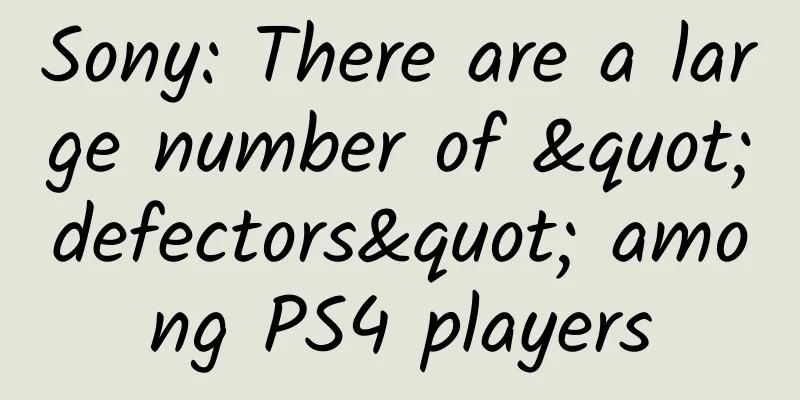Focus on the defense of small stars! How strong is the "Chinese compound eye"?

|
On February 14, the second phase of the "China Compound Eye" project started construction on Zhongzhou Island, Longjiao Town, Yunyang County, Chongqing. The project covers an area of more than 300 acres and plans to build 25 30-meter aperture radars by 2025. By then, it will be possible to detect and image asteroids tens of millions of kilometers away, providing important support for my country's near-Earth asteroid impact defense and planetary science research. On December 29, 2022, the "China Compound Eye" completed the installation, debugging and start-up observation of the first phase of the project, and successfully took the country's first ground-based radar three-dimensional lunar map. △The first ground-based radar 3D image of a lunar crater in China The "China Compound Eye" is my country's first large-scale distributed aperture deep space detection radar. After it is fully built, it can achieve ultra-long-range detection, with a detection distance of up to 150 million kilometers. What is the "China Compound Eye"? Why build the "China Compound Eye"? What is the “Chinese compound eye”? "China's Compound Eye" is a deep space detection radar planned and built by the Chongqing Innovation Center of Beijing Institute of Technology in Chongqing. It can realize the observation of asteroids and terrestrial planets hundreds of millions of kilometers away, expand the boundaries of human deep space observation, and meet the country's scientific research needs such as near-Earth asteroid impact defense and Earth-Moon situational awareness. Why is it called "Chinese Compound Eye"? "Chinese compound eyes" is a descriptive name. Some insects' eyes are compound eyes composed of many small eyes, while "Chinese compound eyes" are a large antenna composed of multiple small antennas, just like the compound eyes of insects. △Screenshot of the simulation animation of the second phase of the project "Preliminary Research Project of Ultra-Large Distributed Aperture Radar High-Resolution Deep Space Active Observation Facility" How far can it see? The "China Compound Eye" is a deep space exploration radar with three-dimensional imaging/deformation monitoring. The planned detection distance of the "China Compound Eye" Phase III project will reach 150 million kilometers, which is almost the average distance from the Earth to the Sun. It has the ability to actively observe celestial bodies in the inner solar system with high precision, and will observe near-Earth/main-belt asteroids, the Moon, Venus, Mars, Jupiter, etc. with high resolution. △Screenshot of the simulation animation of the first phase of the project, “Distributed Radar Astronomical Imaging Survey Instrument Verification Test Field”. Why build the "Chinese Compound Eye"? Scientific research shows that many mysteries of the Earth, such as the birth of the Earth and the extinction of the dinosaurs, are closely related to near-Earth asteroids concentrated between the orbits of Mars and Jupiter. In recent years, there have been frequent incidents of asteroids approaching the Earth and threatening humans. How to prevent asteroid impacts has become a topic of concern to countries around the world. So far, scientists have tracked more than 2,000 asteroids that pose a potential threat to the Earth. The "China Compound Eye" will provide more powerful technical support for humans to avoid the risk of asteroid impact in outer space. It is the world's first deep space radar with three-dimensional imaging and deformation monitoring, with high-precision active observation capabilities of celestial bodies in the inner solar system, and can complete the demonstration and verification of deep space radar detection and imaging, and can also see the trajectory of asteroids as big as a football tens of millions of kilometers away. "China's Compound Eye" and "China's Sky Eye" What's the difference? ■In terms of configuration The "China Sky Eye" is the world's largest radio telescope, a 500-meter-diameter "dish cover", while the "China Compound Eye" is a distributed radar, composed of small "dish covers". The first phase consists of four 16-meter aperture radars, the second phase consists of 25 30-meter aperture radars, and the third phase will expand the number of radar units to more than 100. ■In terms of function The "China Sky Eye" is a radio telescope that mainly receives signals emitted by stars. It is a highly sensitive "farsighted eye", but it does not emit electromagnetic waves. Asteroids themselves do not emit electromagnetic waves, so the "China Sky Eye" has some limitations. The vast and deep universe is like a blocked view in the middle of the night, but it does not mean that there is nothing around you. The "China Compound Eye" is an active observation device that complements the passive observation "China Sky Eye". It can emit electromagnetic waves to detect asteroids and receive the echo of its own electromagnetic waves to detect and image, so that we can know where something is, how big it is, and what it looks like. △China Sky Eye |
Recommend
Dell's all-in acquisition of EMC causes 10 shocks
[[151859]] Text/Lao Liang on the front line Hopef...
Towards advanced level: Network basics that excellent Android programmers must know
1. Introduction Network communication has always ...
A complete analysis of the Toutiao search account setup and delivery ideas
As a new search platform launched this year, Tout...
Regarding iOS multithreading, it is enough for you to look at me
[[142590]] In this article, I will sort out sever...
The mark of "aliens" between the ridges: the amazing discovery of Hailin crater
Author: Duan Yuechu and Huang Xianghong In the no...
Rumors debunked! Power savers really can’t save electricity bills, don’t be fooled again!
Power Saver, a power saving device that claims to...
Q3 sales increased by 8.9% year-on-year. Where are the opportunities in the color TV market next year?
There are only two months left in 2016, but the c...
A famous female star revealed that she suffers from an "incurable disease"! Doctors warn that this disease is easily misdiagnosed and will recur repeatedly
In recent days, the singer Penny Tai, who has not...
The "flying dragon" in the sky is not a simple chicken
What is a "flying dragon"? Author: Ma M...
Railways, a genius system
Editor's note: The history of railway develop...
Tong Tong's 15 anti-aging diet classes teach you how to easily eat to get frozen skin and curves, the anti-aging secrets of the ageless goddess
Tong Tong's 15 anti-aging diet classes teach ...
Mao Xiaobai's "Grassroots Writing Content Creation Course"
Copywriting planning training course video tutori...
How to correctly understand user retention rate?
Retention rate is the most important indicator to...
Promotional tactics for selling goods through live streaming!
Recently, Wang Leehom's live streaming lectur...
AI decides your university? Calculate your 7 personal qualities in minutes
Currently, many universities adhere to the concep...









